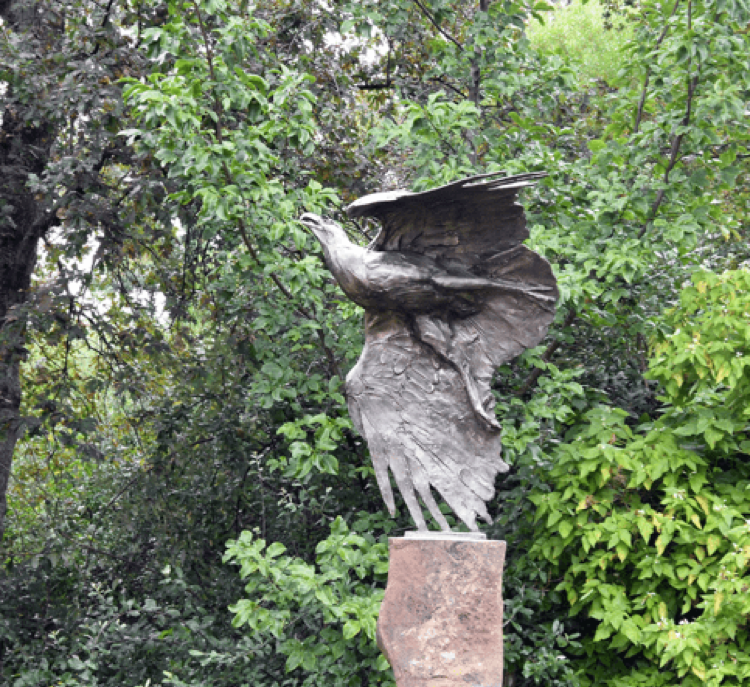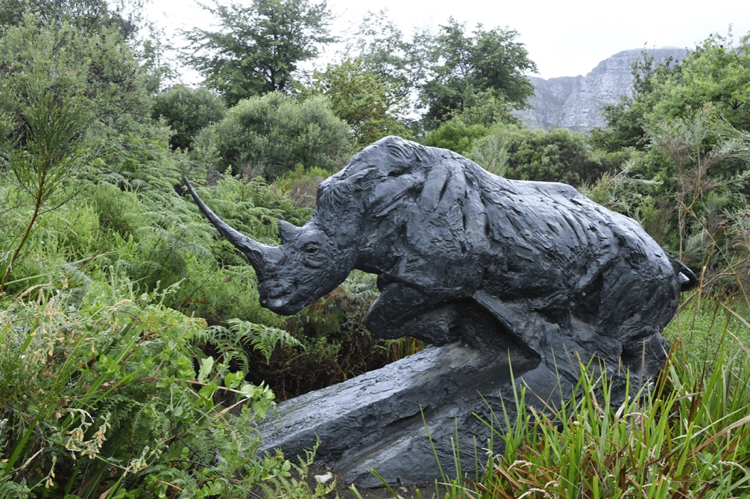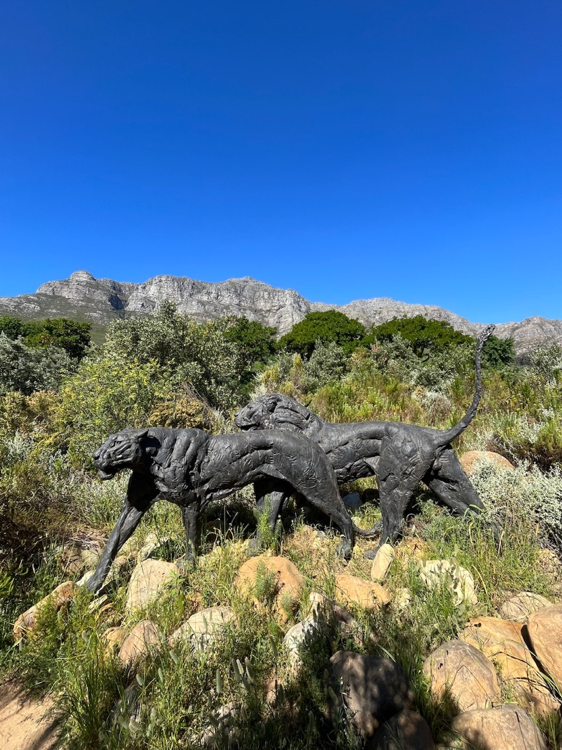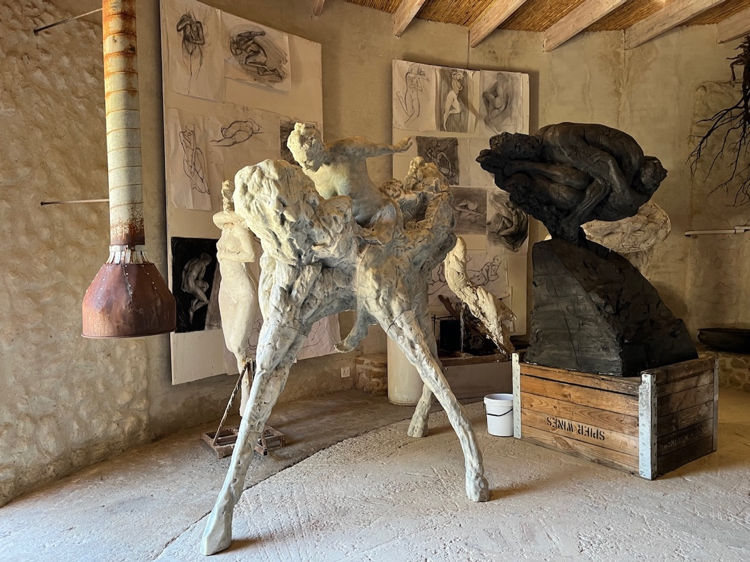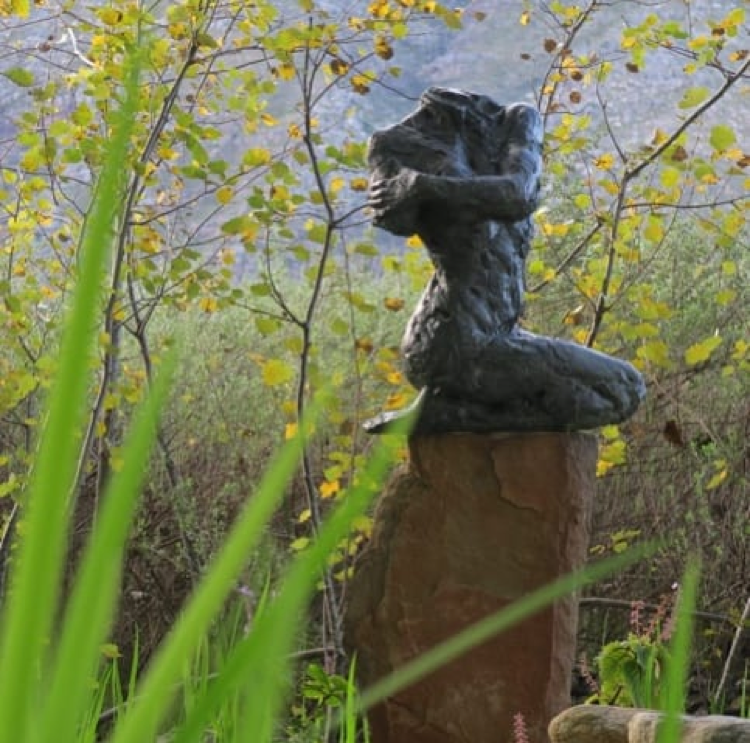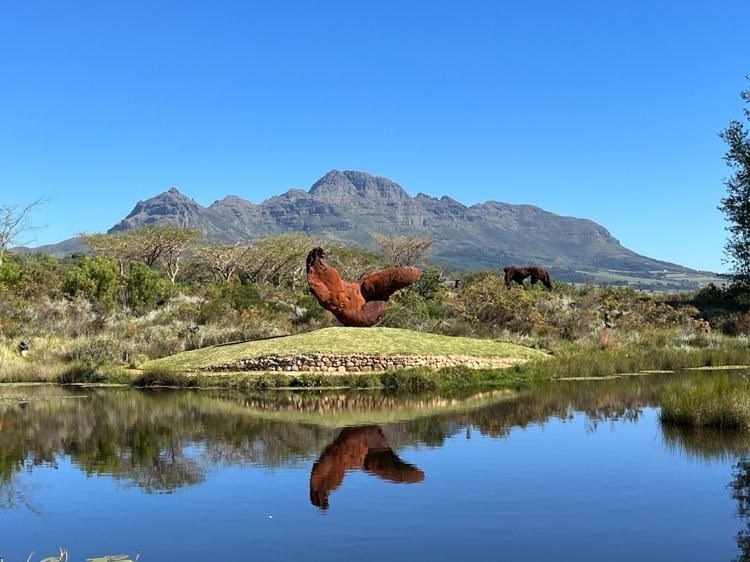A Visit to the Dylan Lewis Sculpture Garden in South Africa
March 15, 2023
By Ricardo and Diana Fernandez
A wonderful attribute of our professional retirement is having time to travel to far-flung parts of the world. Last fall we embarked on a tour of the Stellenbosch region of Southern Africa, sponsored by noted landscape designer Karen Chapman, with stops in South Africa, Zimbabwe, and Botswana.
We both enjoy our garden in Beverly, Massachusetts but can only grow what is compatible with the New England climate. The tour to Southern Africa took us into a world of gardens unlike any we had ever seen in our horticultural experience. The itinerary placed an emphasis on unique gardens and the fynbos natural landscape, and included visits to wineries, rivers, and safaris.
We were particularly looking forward to our visit to the Dylan Lewis Sculpture Garden, acclaimed as a magical place where art and nature coexist and interact in a way described as miraculous.
Dylan Lewis — Sculptor of Animal Forms
Dylan Lewis (b 1964, South Africa) was raised in an artistic family and originally pursued the craft of painting, before following in his father’s footsteps to concentrate on sculpture.
Like his father, Dylan started sculpting birds, but then immersed himself in big cat imagery for more than a decade. His bronzes of felines were eventually viewed as “perhaps the most powerful commentary on nature and wilderness that has been made by any artist of this era.”*
Lewis had completed a single piece for a life-sized rhino sculpture (admired by Nelson Mandela), when he received a life changing assignment. The wealthy and influential Rupert family commissioned Lewis to sculpt a leopard for a new golf course. Impressed with the eventual sculpture, the Ruperts then commissioned eighteen leopard sculptures depicting the animal’s life cycle, one for each hole of the golf course. By the year 2000, Dylan Lewis was widely acclaimed for his wildlife sculptures, with avid international collectors and successful auctions at Christie’s.
Transition to Human Forms
Lewis’ next exploration entailed the classical Hellenic female form which transitioned into human depictions possessing animalistic and shamanic features. His current themes work to reconcile the masculine and explosive animal energy with the Jungian notion of “the wilderness within.”
The Sculpture Garden
Lewis began the garden project in 2009 and the resulting landscape has shaped and inspired his sculptures ever since. The clay ground with its river boulders was transformed into a garden with an extended body of water, and peppered throughout with indigenous plants, particularly fynbos and buchus species. More than 60 sculptures are now carefully sited along 4 km of paths. The result is a landscape that moves between wild and tame and represents the very essence of his artistic philosophy.
The sculpture garden offers a spectacular setting where nature, landscape and artistic inspiration combine into a truly original and magnificent vision. It is a place for reflection where the Stellenbosch Mountain frames wildlife, shamanic figures, fragmented human, and animal torsos of monumental scale. The result is an environment that harks back to a primeval land which stirs our sometimes dormant, authentic and wild selves.
*https://www.everardlondon.com/artist/DYLAN_LEWIS/biography/
Diana and Ricardo Fernandez live in Beverly and enjoy traveling in retirement; Ricardo worked in medical product engineering and Diana in health care institution administration. They are involved with the Cape Ann Museum, Montserrat College of Art, and The Trustees.



